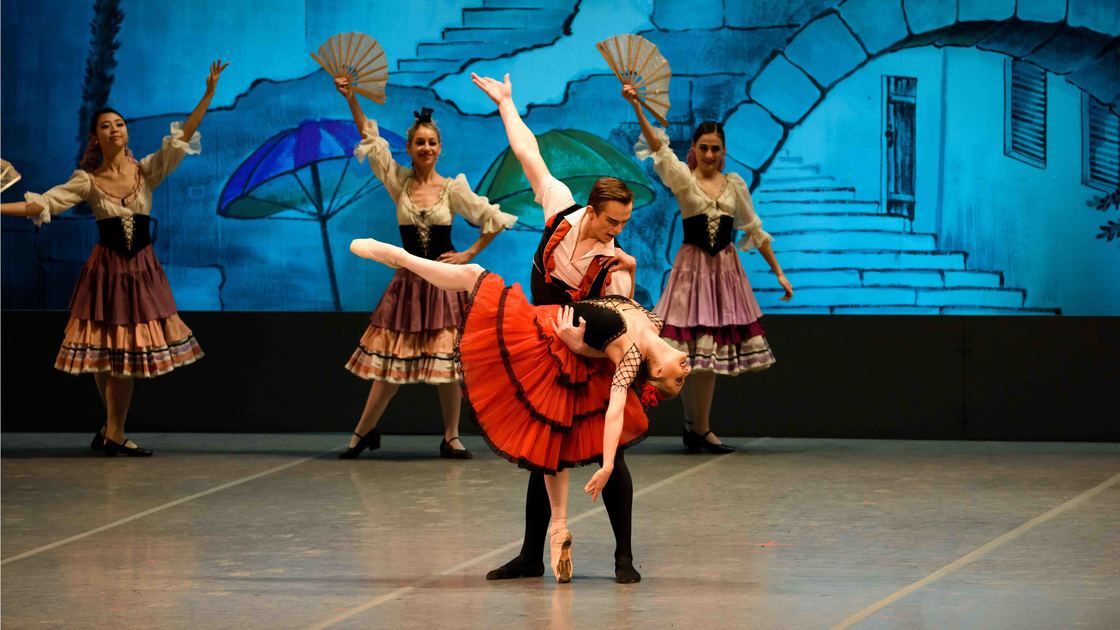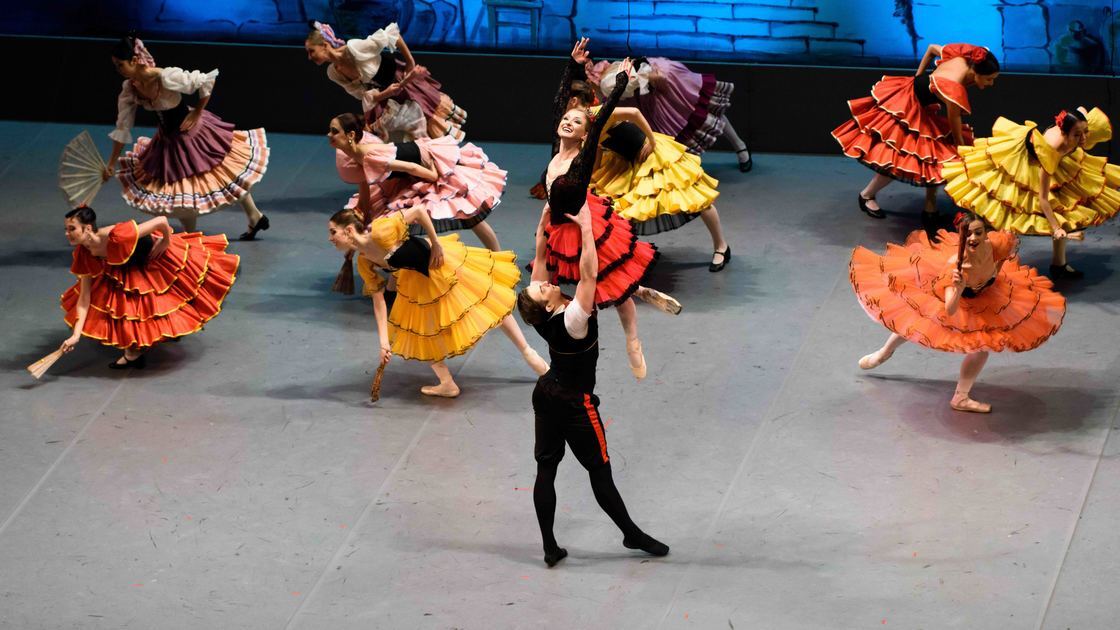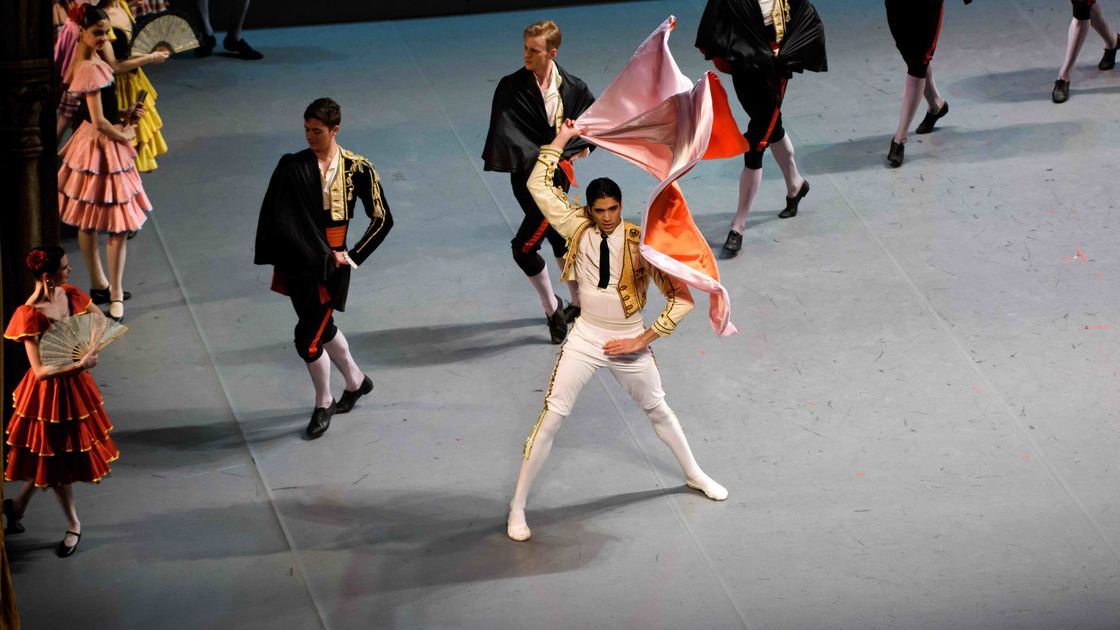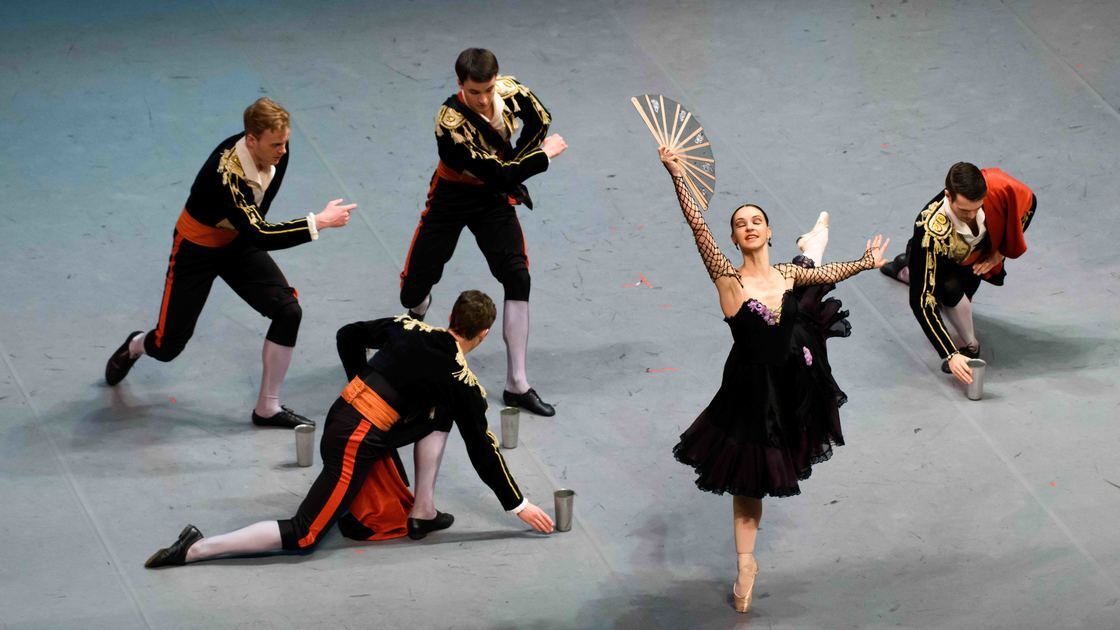EDMOND—The Russian National Ballet Theatre gave 401 then 502 Armstrong Auditorium guests a taste of Spain on January 30 and 31 with back-to-back performances of Leon Mincus’s Don Quixote.
The performance emulated the original 1869 ballet production of Don Quixote with Leon Mincus’s musical score and much of the choreography of Marius Petipa, renowned 19th century choreographer famous also for choreographing La Bayadere, The Sleeping Beauty and Swan Lake.
Concertgoers followed self-proclaimed knight Don Quixote (played by Dmitriy Romanov) on his delusional quest accompanied by his rotund squire, Sancho Panza. Derived from Part 2 of Miguel de Cervantes Saavedra’s book Don Quixote, the ballet depicted Don Quixote’s involvement in the romantic lives of Kitri (Alexandra Krukova) and Basilio (Dmitriy Sitkevich). Kitri’s father, Lorenzo, intends for her to be wed to the wealthy but oafish Gamache, and throughout the ballet Kitri and Basilio evade this fate as Don Quixote ambles in periodically, often only adding chaos to the situation.
Don Quixote is on a quest to find and protect the ideal woman he has seen in a vision, Dulcinea. Seeing his Dulcinea in Kitri, he follows her as she and Basilio flee from Lorenzo’s plans. Quixote encounters gypsies, a puppet show that he mistakes for reality, and a windmill that he perceives to be a giant and attacks. While unconscious from his attack on the windmill, he also dreams of graceful pastel wood nymphs.
Most of the time, Quixote stares off into the distance, presumably looking toward the “unreachable star,” as it is called in the musical counterpart to the ballet. When Basilio fakes his own suicide, Don Quixote helps Kitri convince Lorenzo to allow Kitri to marry the dying suitor, after which Basilio miraculously springs back up from the dead for a renowned paux de deux (a “step for two”) and an implied wedding. Quixote continues on his quest after realizing that Kitri is not his Dulcinea.
Set in Spain, the ballet’s rendition of Don Quixote displays vibrant colors, countless props and daring tricks. Female dancers flicked fans and shook tambourines in time with their footwork and groups of male dancers playing matadors whipped red capes around and placed cups in formations around the stage for street dancer Mercedes to bourrée (toe walk) around.
The famous paux de deux showcased some of the most advanced tricks of the night. A crowd favorite was the lift where Basilio held up Kitri above his head with one hand, as well as an ending pose where Kitri faced the audience with her torso balanced only on Basilio’s thigh. Basilio elicited immediate applause with two powerful cabriolés in a row (where both legs are kicked up and beaten against each other in the air). Kitri, not to be outdone, used an entire solo part for a long sequence of fouetté turns (a turn begun by swinging one leg to the front for momentum), during which one audience member was heard exclaiming: “That’s crazy!” After the second performance was completed, another patron summed up the energy from the ballet: “That was so fun!”
Before the performance, one patron, a member of Oklahoma City’s branch of Certified Tourism Ambassadors, said she was in awe of Armstrong Auditorium and had to take pictures of everything. She also mentioned that since she worked in sales and marketing, she wanted to give her clients tickets to concerts so they could experience the auditorium. Another visitor described the auditorium as “surprisingly elegant in the middle of nowhere.” Her mother said she was impressed by the affordability of the tickets to world-class performances.
The Russian National Ballet Theatre was founded in 1989 by famous ballet dancer Sergei Radchenko. After the Soviet Union fell, it became the first independent Russian classical ballet company. It is currently on a four-month tour in the United States. Sergei’s wife, Elena Radchenko, founded The Moscow Festival Ballet as a sister company to the Russian National Ballet Theatre. Since 2011, when the Russian National Ballet Theatre performed Swan Lake at Armstrong Auditorium, one of these two companies has performed at the concert hall every January. In addition to Don Quixote, the companies have performed Swan Lake, Sleeping Beauty, Cinderella, Chopiniana and Romeo and Juliet for Armstrong concertgoers throughout the last six years.
Next in the line-up for the 2016-2017 Armstrong International Cultural Foundation performing arts series is an almost sold-out show on February 21: The Five Irish Tenors.




